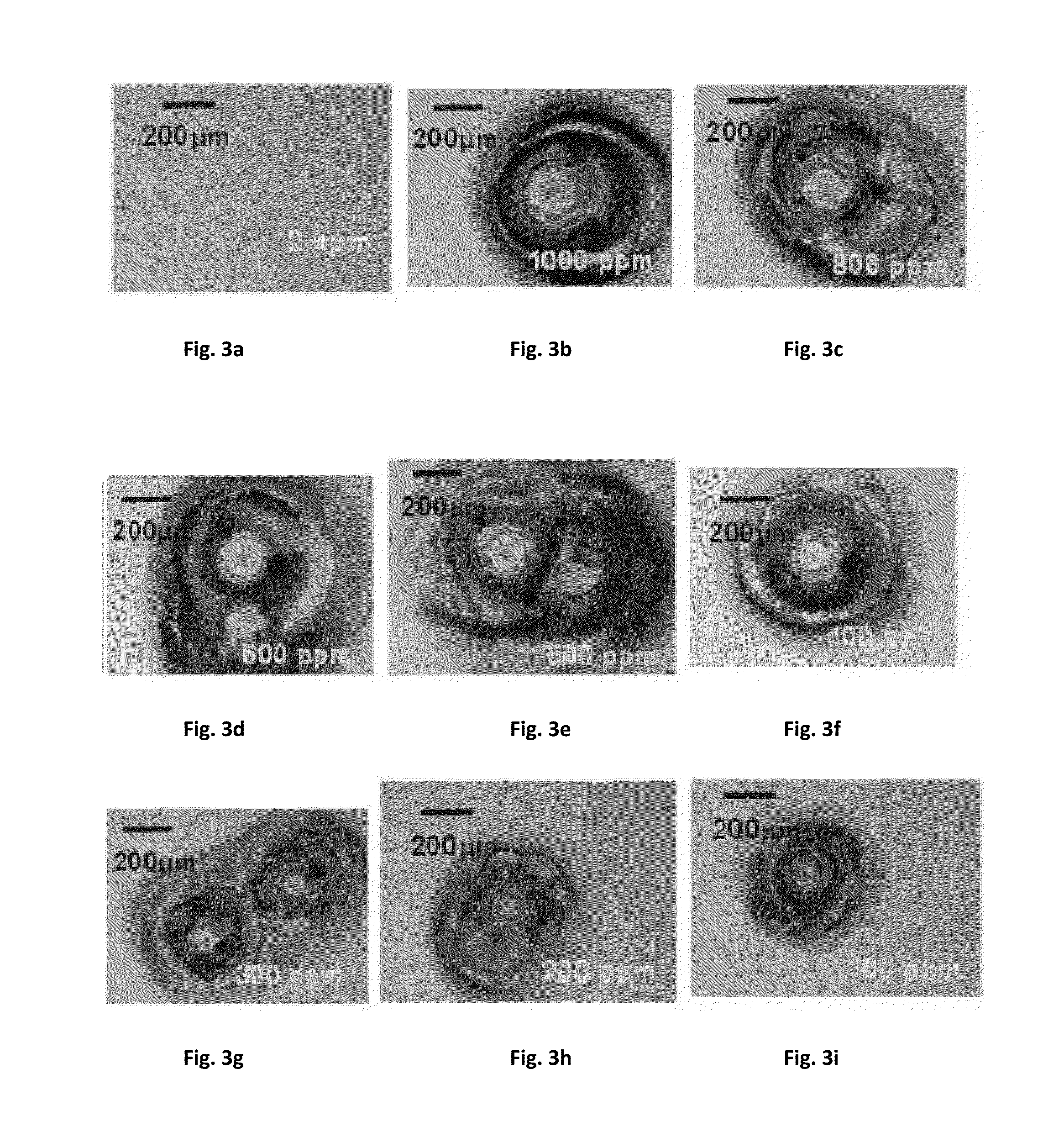Polishing compositions and methods for polishing cobalt films
a technology of cobalt film and composition, applied in the direction of polishing compositions with abrasives, chemical instruments and processes, electrical apparatus, etc., can solve the problems of unsatisfactory corrosion of cobalt layers, achieve good mrr selectivity with dielectric and barrier metal films, and improve the surface corrosion protection. the effect of co material removal ra
- Summary
- Abstract
- Description
- Claims
- Application Information
AI Technical Summary
Benefits of technology
Problems solved by technology
Method used
Image
Examples
example 1
[0036]This example demonstrates that the impact of acid additives in a polishing composition on Co corrosion using static etching rate (SER) tests. This example discloses that in order to prevent Co corrosion, the acid additives in said polishing compositions need to have a pKa within the range of 1<pKa<18. A polishing composition containing strong acid additive (pKa<0) will cause Co corrosion.
[0037]In this example, the polishing composition primarily comprises 0.02-3 wt % abrasive, several acids as cobalt RRE, an azole containing corrosion inhibitor or combinations thereof, a weak acid as a pH adjuster and water as a liquid carrier. Polishing compositions with different acid additives were tested by 40° C. SER to check the corrosion performance. 40° C. SER tests were performed on ˜2×2 cm Co coupons immersed in the polishing composition for 5 min. After SER, the Cobalt coupon was rinsed immediately with a lot of DI water and dried with nitrogen gas to clean the surface. The image of...
example 2
[0040]This example demonstrates how Co corrosion is related to sulfate / chloride (or any other halide) anion concentration in the polishing compositions.
[0041]Sulfate / chloride anion concentrations are accurately measured using an ion chromatography (IC), commercially available from Thermo scientific Dionex as IC-5000 model. Other similar IC tools can also be used to quantify sulfate / chloride anion concentration in the polishing compositions. Although sulfate or chloride ions were not intentionally added to the control slurry, the impurity in the raw materials might contribute to ppm levels of sulfate / chloride in the polishing compositions. For this example / study, for some compositions, we increased the sulfate or chloride ions in the slurries by intentionally adding sulfuric acid or hydrochloric acid to the control polishing compositions so that there is in-situ generation of sulfate or chloride anions. All the sulfate / chloride concentrations listed in Table 6 were measured by Thermo...
example 3
[0045]This example shows Co removal rate and SER of one optimized polishing composition. The polishing composition comprised silica particles, RRE and CI with 1a-5b). The optical images (OM) of Co wafers (FIG. 5b) showed that no Co corrosion was occurring post-CMP, using the optimized polishing compositions. This is very important for Co planarization in CMP, where it is often desired to use a Co slurry with a high RR while not having Co corrosion issues.
PUM
| Property | Measurement | Unit |
|---|---|---|
| pKa | aaaaa | aaaaa |
| corrosion potential difference | aaaaa | aaaaa |
| pH | aaaaa | aaaaa |
Abstract
Description
Claims
Application Information
 Login to View More
Login to View More - R&D
- Intellectual Property
- Life Sciences
- Materials
- Tech Scout
- Unparalleled Data Quality
- Higher Quality Content
- 60% Fewer Hallucinations
Browse by: Latest US Patents, China's latest patents, Technical Efficacy Thesaurus, Application Domain, Technology Topic, Popular Technical Reports.
© 2025 PatSnap. All rights reserved.Legal|Privacy policy|Modern Slavery Act Transparency Statement|Sitemap|About US| Contact US: help@patsnap.com



